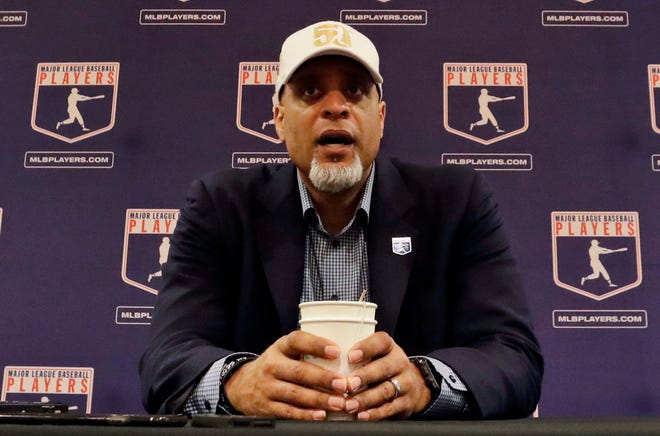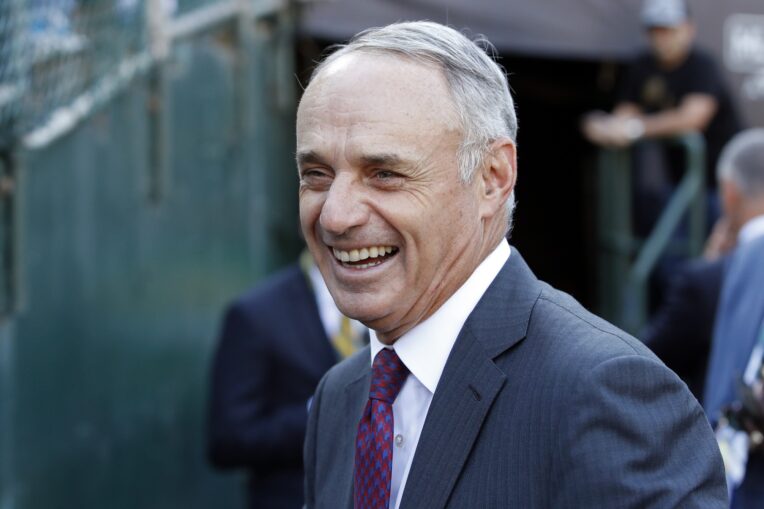
It has been 37 days since MLB’s owners locked the players out, in a move Commissioner Rob Manfred termed “bad for business”, but a step to “drive the process forward for a new agreement now.” The two sides have not met since mid-December, and have not discussed core economic issues since December 1. So far, the lockout has not achieved its desired endpoint.
Granted, the holiday season may have had an impact on the ability of the sides to meet, but the lack of movement, or even discussion, is hurting the game more and more every day. In an article by Jeff Passan for ESPN.com, the author discusses a conversation he had with a friend, who is growing increasingly frustrated by the labor situation, and that baseball is becoming “frighteningly irrelevant.” Passan says his friend is an example of baseball fans everywhere, and he’s right. I had a similar conversation with long-time, season ticket-holding Mets fan who attended the 1969 World Series. He says his interest has waned considerably, going back to the 2020 season, because of the persistent and tiresome labor strife.
This is the time when normally trades are being made, remaining free agents are gobbled up by teams, and preparations are underway for the beginning of spring training in just over a month. All of this keeps baseball in the headlines, relevant as the snow falls and darkness comes by 5 pm every day. Only that’s not the case this year. As Mets fans, we have the Buck Showalter and coaching staff storylines to keep us engaged. But that will come to an end. Then what? Tune into the MLB Network for a rerun of the 1974 World Series?
While plummeting offseason fan engagement is a fallout of the lack of a Collective Bargaining Agreement (CBA), other problems loom just over the horizon. If there is no agreement by February 1, it’s likely the start of spring training will be impacted. If there is no agreement by March 1, it’s quite possible regular season games will be lost. Is all hope gone?
Passan points out that insiders to whom he has spoken say that negotiations are not expected to heat up until late January. That’s not good nor wise, rather it’s a function of the acrimony that exists to a point where neither side will make a move until there’s revenue that may be lost.
Players do not get paid during spring training. Owners make money from the exhibition games (that’s why there are so many of them), so potentially lost games in March may move the owners to the negotiating table. Players begin receiving checks when the season starts, so the possibility of lost income may inspire them to get serious in negotiations, if a few weeks later. Interestingly, both sides do seem to agree that the next proposal should be submitted by the owners, as the players made the last volley on December 1. The owners reviewed it and ended talks after seven minutes that day.
The issues in the negotiations have been discussed many times. In summary, the players want an increase to the minimum salary, earlier arbitration and free agency, as well as a higher threshold when the Competitive Balance Tax CBT) would kick in, and a change to the draft structure so teams are not “rewarded” for poor seasons with premium draft picks. The owners want a very small, time-based increase in the CBT threshold, and do not support any type of earlier arbitration or free agency.
There are some economic facts that support the players’ position of wanting a larger slice of the monetary pie. From Passan’s article:
Player salaries dipped to $4.05 billion in 2021 — a $200 million drop from the record high in 2017 and the lowest since 2015, when the league still hadn’t crossed the $4 billion mark. It’s not just the total spending that chapped players.

On the topic of whether or not the CBT, and whether or not it functions as a de-facto salary cap:
While two teams went beyond the $210 million competitive balance tax threshold, the Phillies ($209.4 million), Yankees ($208.4 million), Mets ($207.7 million), Red Sox ($207.6 million) and Astros ($206.6 million) came right up to the edge without exceeding it.
From 2011 to the last full-revenue season, 2019, the (CBT) threshold rose from $178 million to $206 million. Industry revenues in that time jumped from an estimated $6.3 billion to $10.7 billion, according to Forbes. That’s a nearly 70% bump in revenue, compared to a CBT threshold that went up 15.7%.
So, where do we go from here? We want baseball (those of us who remain interested). First things first, there will be no agreement until MLB and the MLBPA start talking. No one involved seems incredibly motivated to do that, so maybe we (with help from Passan) can help. Passan spoke to many people, players, an owner, and some team executives, and consensus among them is that an agreement may ultimately look something like this:
- An increase in the minimum salary to $650,000 from $570,500
- Add performance bonuses for pre-arbitration players (to achieve increased compensation for younger players)
- Universal DH and expanded playoffs to 14 teams
- Change draft order rules and stop providing draft picks to teams that lose players in free agency
- Other dis-incentives for “tanking”
- Raise the CBT threshold to $230 million for year one of the agreement, and increase yearly from there
Seems simple, right? A quick reaction to the above is that it seems like a good starting point. The increased minimum salary hits one of two points that players covet most-increasing young players’ compensation. The other main point for the players is that teams will be less inclined to “tank”, since there are fewer prizes available for doing so.
In any negotiation, the sides do not get everything they want. The expanded playoffs will make the players cringe (as I did). Increasing the field to 14 teams will provide more postseason revenue (a win for there owners), and may instill less of an incentive for teams to spend aggressively with more teams qualifying for October baseball. The players have to give to get, and this would be a concession for them. The CBT threshold is interesting. The proposed amount above is not a “huge” increase, but it is a higher threshold, so while both sides may not like it, they may be able to live with it.
Passan did not provide details on how tanking could be discouraged, so the specifics on that would be important. If the plan works, that’s another win for the players. The net of the above tilts toward the players, though not in a wipeout kind of way. In looking at the information above about the game’s revenue gains against the players’ share of the wealth, it stands to reason that the next CBA should favor the players to a degree.
It’s January 7, and nothing is happening (to our knowledge). We may have a few more weeks in the baseball abyss. It may be more than that. History tells us that this may be long(er), arduous process. We know one thing for sure. The lockout will not end until they start talking.















